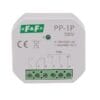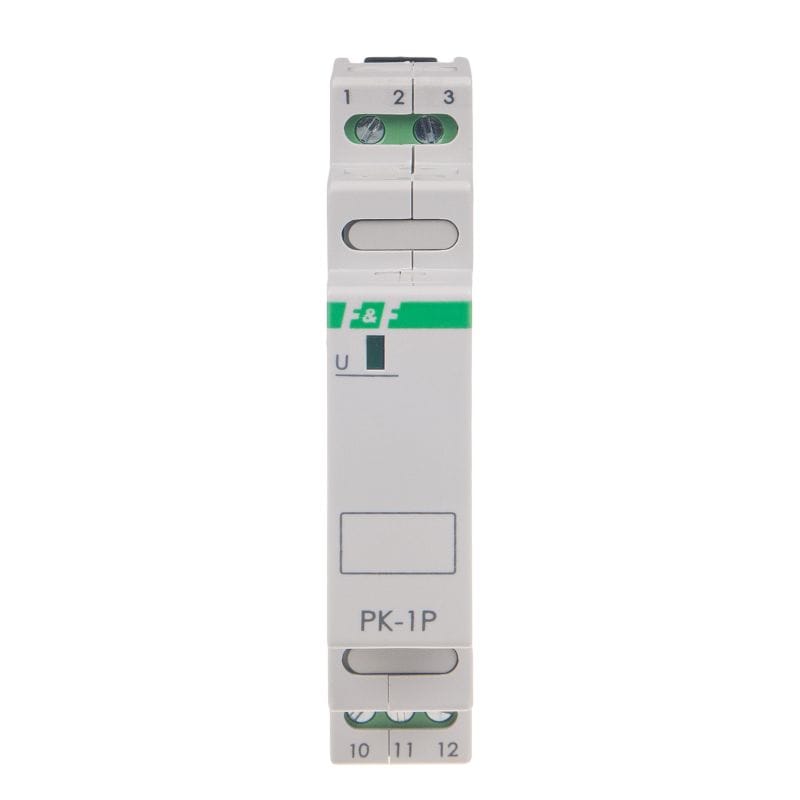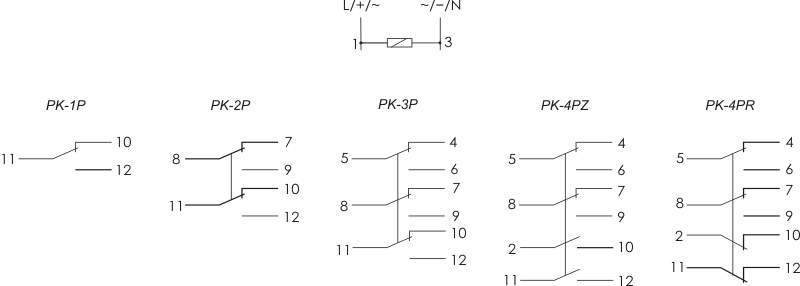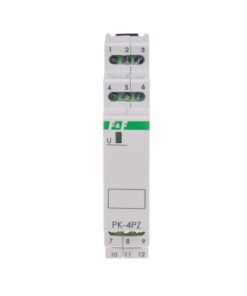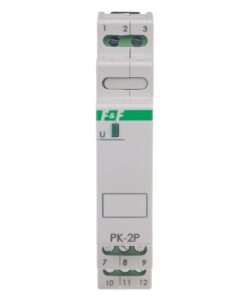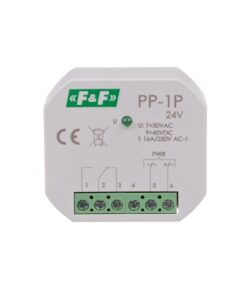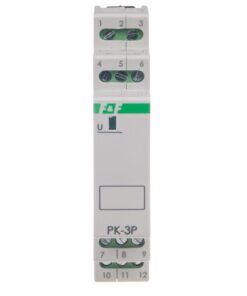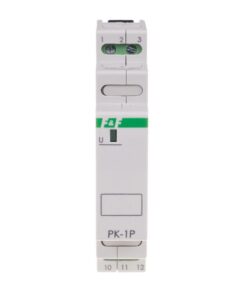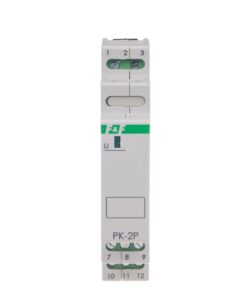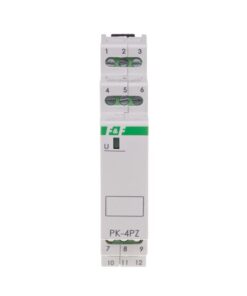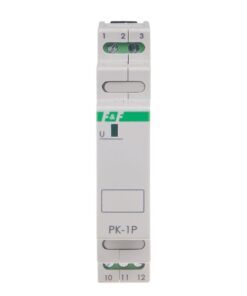Functioning
Application of the power supply voltage to the relay’s coil results in a shift of the contact. After the decay of the voltage in question, the contact returns to the initial position.
Order labelling method:
eg. PK-1P 230V ——— supply voltage.
Contact Rating
Markings on devices
The contact load value given on the device refers to resistive receivers (non-inductive receivers for which the power factor parameter is 1 (cosφ=1)).
Switching on inductive or capacitive loads (e.g. motors, switching power supplies, etc.) leads to a significant reduction in the durability of contacts, e.g. a load for which cosφ=0.5 shortens the service life (number of switching cycles) by 20%, and for cosφ=0.25 even by 50%.
Contact load capacity table
Depending on the nature of the connected receiver, the contact can be loaded with the following values:
LIGHT SOURCES
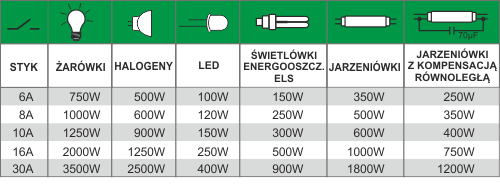
RECEIVER LOAD NATURE
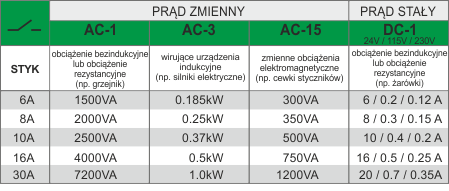
The above data are approximate and will depend to a large extent on the design of a specific receiver (this particularly applies to LED lamps, ESL energy-saving lamps, electronic transformers and switching power supplies), switching frequency and operating conditions.
When selecting the maximum load for a given type of relay, the following should be taken into account:
| Light bulbs | The resistance of a cold bulb is usually at least 10-12 times lower than the resistance of a working bulb. For example, a cold 230V/100W bulb has a resistance of about 40 Ohms, which means that in the worst case, when switched on, for at least a few milliseconds, a current of about 5.5 A flows through it, which decreases to the nominal value of about 0.4 A after the bulb has warmed up. |
| Halogens | As with a regular bulb, the resistance of a cold halogen bulb is 16-20 times lower than the resistance of a working bulb. This means that for a 230V/100W bulb, a current of 6.5-8 A can flow when the bulb is switched on. |
| Single-phase induction motor (e.g. pump) | The starting current of the motor can be up to 5-10 times the rated current. Additionally, such motors are equipped with additional starting capacitors that can still increase the starting current value. |
| Switching power supply (e.g. for LED lighting) | Switched-mode power supplies are used in more and more electrical devices, including LED bulbs, energy-saving bulbs, and fluorescent lamp controllers. This is also the worst possible type of load. This is due to the fact that there are capacitors at the input of such power supplies that practically constitute a short circuit when the power supply is switched on – for a period of several milliseconds, currents of values 100-200 times higher than the rated currents of such a power supply can flow there. |


